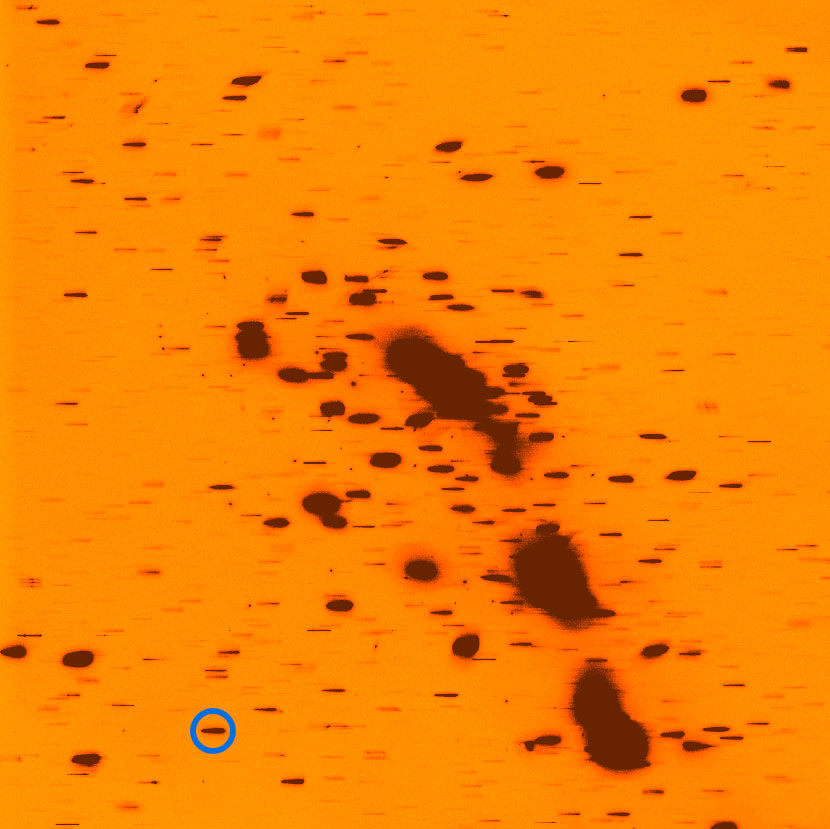The modes of NIRISS, Canada's instrument on Webb
One of Canada's contributions to the James Webb Space Telescope, a collaboration between NASA, the European Space Agency and the Canadian Space Agency, is a scientific instrument named the Near-Infrared Imager and Slitless Spectrograph (NIRISS).
NIRISS will be able to capture both images and spectra (light dispersed into its different colours or wavelengths) from different types of celestial objects in near-infrared light. The instrument has four observation modes; each will help the NIRISS team collect different kinds of data that are well suited for different celestial targets and scientific objectives.
The Single Object Slitless Spectroscopy (SOSS) mode

Using its SOSS mode, the NIRISS instrument will be able to study the atmospheres of exoplanets as they pass in front of their star. NIRISS can collect a spectrum of an exoplanet's atmosphere, like the one in this image. (Credit: European Southern Observatory/David Sing)
The spectrum collected during an exoplanet's transit acts like a barcode, showing the presence of certain atoms and molecules in the exoplanet's atmosphere. Sodium and potassium are seen in the visible light spectrum in the image above. Webb will be sensitive to other substances such as water vapour, carbon dioxide and ozone in the near infrared.
The SOSS mode allows Webb to obtain high-precision, medium-resolution spectra from one bright object at a time. It was designed to observe an exoplanet as it transits in front of its host star to determine the exoplanet's atmospheric composition, temperature, habitability, and other important characteristics. The Canadian-led scientific program NEAT (for NIRISS Exploration of the Atmospheric diversity of Transiting exoplanets) will use this mode.
The Wide Field Slitless Spectroscopy (WFSS) mode


Simulated images of the galaxy cluster MACS J0416.1-2403 as observed with NIRISS in WFSS mode. In the left image, galaxies can be seen as dots or blobs. For each galaxy, NIRISS collects an individual spectrum which appears as the corresponding galaxy smeared horizontally in the right image. One galaxy and its corresponding spectrum are circled in blue in the images. (Credit: Chris Willott/NRC-Herzberg)
The WFSS mode allows Webb to obtain low-resolution spectra from thousands of objects at a time. It is best suited for studying fields of galaxies that can contain hundreds or thousands of individual galaxies, and to collect measurements of their distances, ages, and other physical characteristics. These data help researchers trace how galaxies evolve over the lifetime of the universe. The Canadian-led scientific program CANUCS (for Canadian NIRISS Unbiased Cluster Survey) will use this mode.
The Aperture Masking Interferometry (AMI) mode

A prototype of a mask used in the Canadian NIRISS instrument in AMI mode which shows the layout of the 7 hexagonal holes in the mask with respect to the Webb primary mirror segments. (Credit: Anand Sivaramakrishnan/STScI)
The AMI mode allows Webb to study objects that are incredibly close together in space using a special technique called interferometry. A mask inside the instrument blocks some light, only allowing light from certain parts of the telescope's primary mirror to pass through hexagonal holes. Astronomers can greatly increase the resolution of the telescope by looking at the patterns created by the different beams of light interfering with each other. The AMI mode enhances the ability to observe two objects that are close together—objects would otherwise look like a single blurred point, like an exoplanet orbiting a star, will instead appear as two distinct points. This mode will be used to observe exoplanets and brown dwarfs, as well as solar systems in formation.
The Imaging mode
NIRISS's fourth mode will be used to enhance observations made by other Webb instruments. Currently, use of the Imaging mode is offered for parallel observations with NIRCam, but parallel NIRISS imaging with other Webb instruments combinations is being considered for cycle 2 and on. NIRISS imaging is also performed before and after observations to be taken with the WFSS mode.